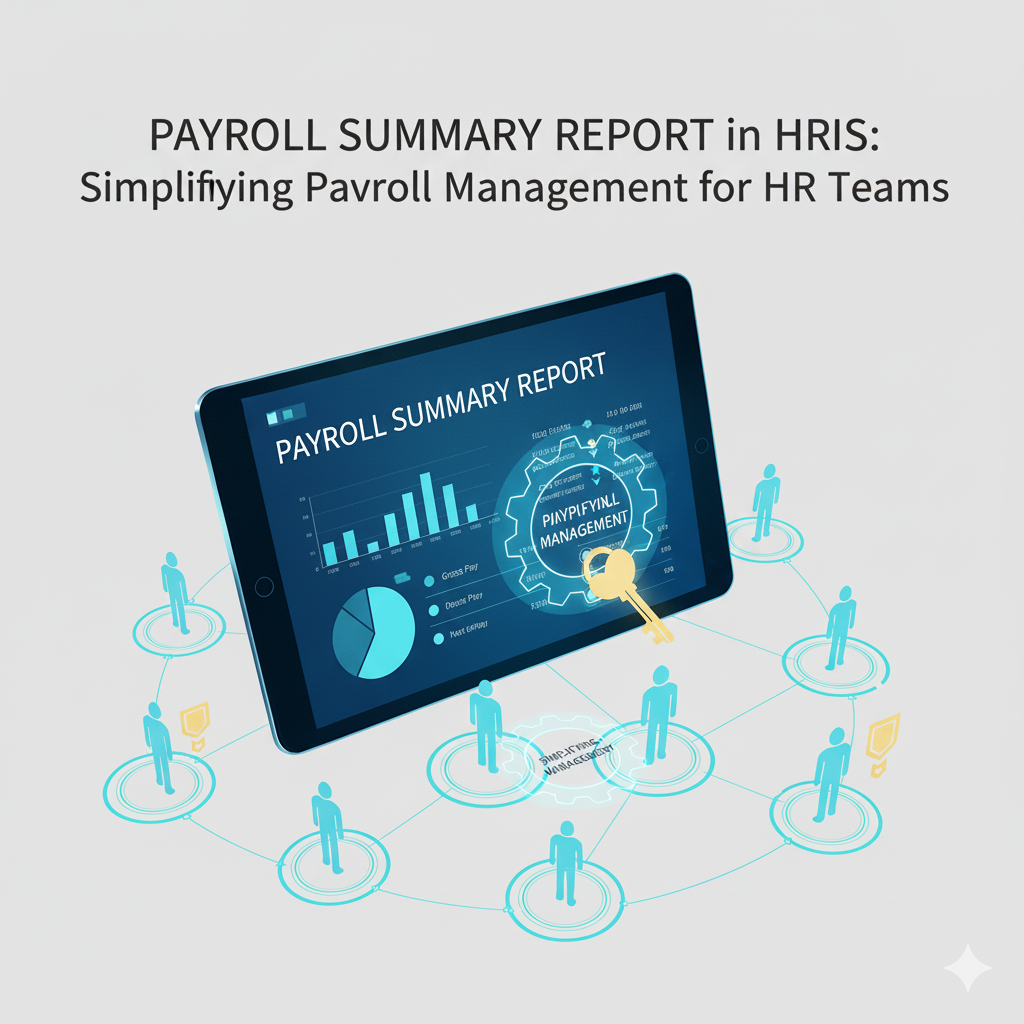Payroll processing is one of the most critical tasks for any HR department — and also one of the most time-consuming. Errors in payroll can lead to employee dissatisfaction, compliance issues, and unnecessary rework. Fortunately, a Payroll Summary Report in your HRIS (Human Resource Information System) can transform this complex process into a smooth, accurate, and stress-free experience.
In this article, we’ll break down what a payroll summary report is, why it’s essential, and how HR teams can use it to simplify payroll management and boost efficiency.
What is a Payroll Summary Report in HRIS?
A Payroll Summary Report provides a consolidated view of payroll data for a given pay period. It summarizes employee salaries, allowances, deductions, government contributions, overtime, and net pay — all in one easy-to-read document.
With a modern HRIS, this report is automatically generated, pulling data directly from attendance, leave records, and salary structures. This eliminates manual computation, reduces errors, and saves HR teams valuable time.
Why Payroll Summary Reporting Matters
Ensures Payroll Accuracy
Manual payroll computation is prone to mistakes. A payroll summary report cross-checks all salary components — from basic pay to deductions — ensuring that employees are paid accurately and on time.
Improves Compliance
In the Philippines, businesses are required to remit SSS, PhilHealth, Pag-IBIG, and BIR contributions accurately. Payroll summary reports make it easy to verify compliance before finalizing payouts.
Enhances Transparency
A summary report allows HR to quickly review payroll data before releasing it. This provides full visibility into total payroll costs, government contributions, and employee take-home pay.
Saves Time and Resources
Automated payroll summaries reduce the need for manual data gathering and spreadsheet work. HR teams can generate comprehensive reports with just a few clicks.
Supports Strategic Planning
Payroll data isn’t just for HR — it’s a valuable tool for management. Payroll summary reports help with budgeting, forecasting, and workforce cost analysis.
Key Features of a Good Payroll Summary Report
When evaluating HRIS platforms, look for payroll summary reports that include:
- Consolidated Salary Breakdown – Basic pay, allowances, overtime, deductions, contributions, and net pay.
- Customizable Filters – Generate reports by department, project, or pay period.
- Automated Calculations – Eliminate manual errors and ensure accuracy.
- Export Options – Download in PDF or Excel for easy sharing with finance and management.
- Compliance-Ready Data – Aligns with local tax laws and contribution requirements.
How HR Teams Can Maximize Payroll Summary Reporting
- Review Before Finalizing Payroll – Use the report as a final check to catch errors early.
- Automate Attendance and Leave Tracking – Ensure accurate input data for payroll computation.
- Schedule Regular Reports – Generate monthly, semi-monthly, or weekly summaries for better tracking.
- Share with Finance – Collaborate with your accounting team for smooth reconciliation.
- Analyze Trends – Use payroll data to optimize workforce costs and forecast future expenses.
Benefits for Private Companies and LGUs
Whether you are a private enterprise or a Local Government Unit (LGU), payroll summary reports can:
- Simplify compliance reporting for government agencies
- Provide transparency in salary allocation and disbursement
- Help monitor overtime and allowances across large teams
- Reduce payroll disputes and improve employee trust
Conclusion
The Payroll Summary Report is not just a document — it’s a powerful tool that simplifies payroll management, ensures compliance, and boosts HR efficiency.
By using an HRIS with automated payroll summary reporting, HR teams can save hours of manual work, reduce payroll errors, and give management a clearer picture of workforce costs.
If your organization is still manually consolidating payroll data, now is the perfect time to switch to a modern HRIS & Payroll System. The result? Faster payroll processing, fewer errors, and happier employees.

